Military Joins Police as Yellow Vest Protesters March On in France
The weekly demonstration is mostly peaceful amid visibly heightened security measures after last weekend's looting and fires.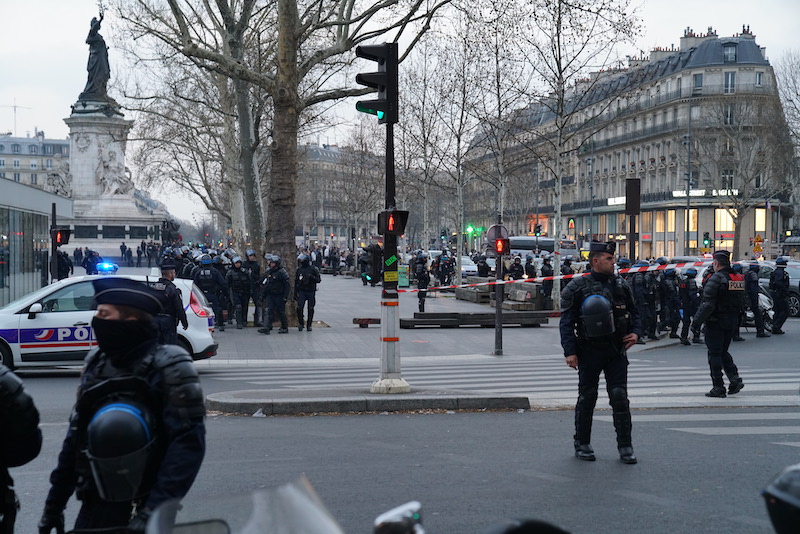 Police form a blockade at Place de la République in Paris, France on March 23, where they stopped members of the yellow vest movement from entering the square and forced demonstrators to remove their signature outerwear. (Photo by Donald Kaufman)
Police form a blockade at Place de la République in Paris, France on March 23, where they stopped members of the yellow vest movement from entering the square and forced demonstrators to remove their signature outerwear. (Photo by Donald Kaufman)
The weekly protests by the yellow vest movement (“Gilets Jaunes”) continued across France amid a heightened security presence in response to a resurgence of violence on the Champs-Élysées the week before.
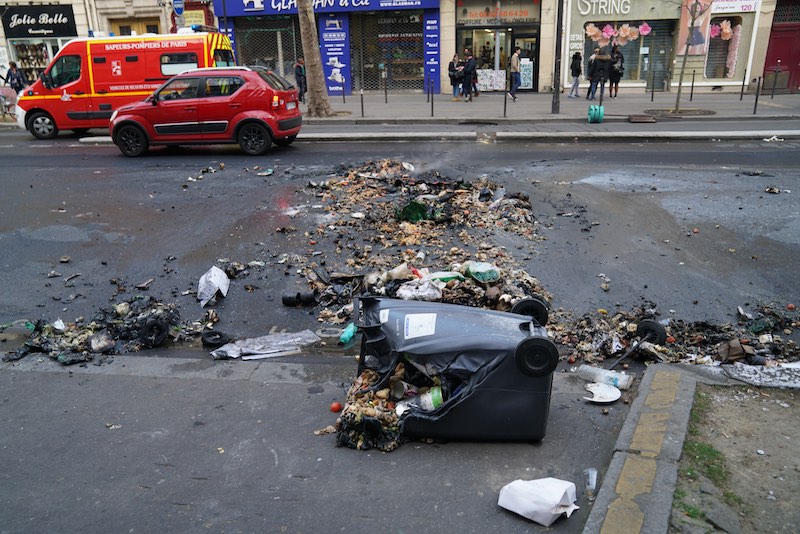
President Emmanuel Macron, along with French government officials, increased security, replaced Paris’ police chief and called in Opération Sentinelle, a counterterrorism unit of the army. More than 100 luxury shops, an exclusive restaurant, a bank and multiple small news kiosks were looted or set on fire the previous weekend.
Both police and military presence were felt throughout Paris on Saturday. Tanks stood by on the street while helicopters flew overhead. Even streets away from any gathering spots were blocked off by rows of police vehicles. Despite these measures, Gilets Jaunes protesters gathered and chanted against the government’s recent decision to involve the military.
Interior Minister Christophe Castaner estimated that 40,500 people took part in protests around France, including in Nice, Lille, Montpellier, Toulouse and Lyon, up from about 32,300 people who participated last week.
The Saturday protests in Paris were mostly peaceful, although tear gas was used late in the day when a small group walking from the 10th arrondissement to Place de la Republique (a central spot for political gatherings in Paris) started a small fire.
When protesters reached Place de la Republique, the police forced them to enter through small lines and take off their yellow vests. Without the vests, it was impossible to distinguish movement members from onlookers, and many demonstrators left the scene earlier than planned as a result.
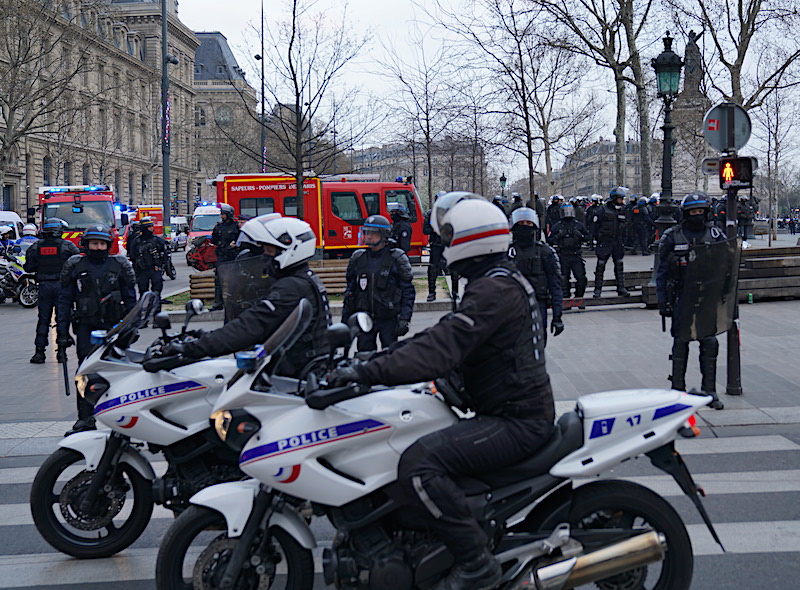
The police also had barricaded the center of Place de la Republique, effectively stopping further demonstrations. No violent outsiders, known as “casseurs” (breakers), took part in the demonstrations Saturday.
Although protests remained mostly nonviolent throughout the country, photo and video footage appears to show cases of unnecessary police violence.
In Nice, a 73-year-old woman marching with a peace flag was assaulted by police and fell to the ground. Images circulating on social media show a cop holding her head as blood poured onto the concrete.
This is the most powerful picture of the century!
A elderly women badly injured by #Macron‘s #regime forces on the floor, stretching his fist to the skies for a better society!#GiletsJaunes #YellowVests #23March #ActeXIX #Resistance pic.twitter.com/RDbfgH2Whv
— Partisan FB (@PartisanDE) March 23, 2019
Another video appears to show a peaceful protester suffering a head injury after police hit her with batons.
? ???️SCANDALEUX! #GiletsJaunes à #Lille #Acte19 : Cette femme a eu le crâne ouvert à cause d’un violent coup de matraque d’un policier très courageux ! ?SCHIAPPA allooo !!
?Dénoncez SVP? #France #Macron #YellowVests #Macron @JeudyBruno #Paris #ActeXIX #Benalla @ericbrunet pic.twitter.com/5nMlFM27j9— Le Général (@leGneral2) March 24, 2019
The Gilets Jaunes movement, which has mounted protests every Saturday since November, remains leaderless, with no formal organization. The movement comprises factions from both the extreme right (usually drawn from the outskirts of Paris) and the extreme left.

Despite their differing political ideology, Gilets Jaunes members are connected in their anger toward President Macron and the economic disparity between the affluent and the working classes.
Since Macron’s election, his administration’s policies have cut thousands of public jobs; the administration has also passed labor law reforms that give employers greater power. The goal of these policies was to create a “start-up nation,” which Macron claimed would bring more jobs and faster economic growth.
After the labor laws were enacted, several French firms underwent massive layoffs. Such corporate moves have led to Macron’s approval rating dropping by half—even before the yellow vest movement began.
Macron’s supporters point out that France’s unemployment rate fell to 8.8 percent at the end of 2018—the lowest jobless rate since 2009. They also cite statistics showing that many small businesses around the country were losing money and had to close due to the bureaucracy and policies of older French labor laws.
The trigger that set off the movement occurred when Macron instituted a fuel tax designed to drop carbon emissions by 40 percent by 2030. This angered many rural and working-class people outside of Paris. Many in France believe climate change is one of the biggest crises humans face today but feel the burden should fall on corporations or the wealthy, rather than on ordinary people.
Macron, dubbed “the president of the rich,” has refused to reinstate a wealth tax for people with assets equal to about $1.5 million.
In early 2019, polling showed Macron’s approval rate dropping to 23 percent. Despite this, the president has kept the fuel tax and implemented an increase in the minimum wage of 100 euros a month; however, many feel that is not enough.
Support for the yellow vest movement has seen a drastic reduction in response to the violence. It is currently at its lowest approval rating—53 percent, eight points less than the previous polling, as 84 percent of those questioned condemned the violence. Most people within the movement also condemn the violence, citing the “breakers.”
Another trigger point for many in Paris occurred this week, when yellow vest protesters set fire to news kiosks, which hold great meaning for Parisians.
Although the government has called out the military, the yellow vests do not plan on stopping their protests any time soon. It also appears that Macron does not plan to make any further concessions at this point.
Your support matters…Independent journalism is under threat and overshadowed by heavily funded mainstream media.
You can help level the playing field. Become a member.
Your tax-deductible contribution keeps us digging beneath the headlines to give you thought-provoking, investigative reporting and analysis that unearths what's really happening- without compromise.
Give today to support our courageous, independent journalists.
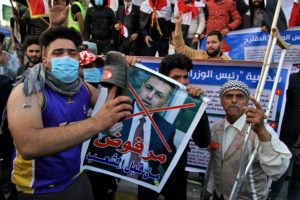
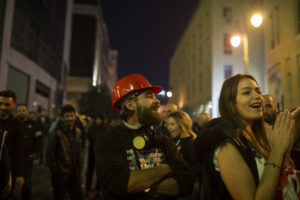
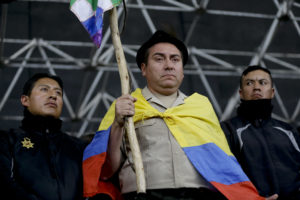
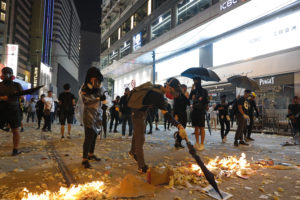
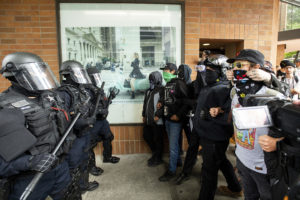
You need to be a supporter to comment.
There are currently no responses to this article.
Be the first to respond.